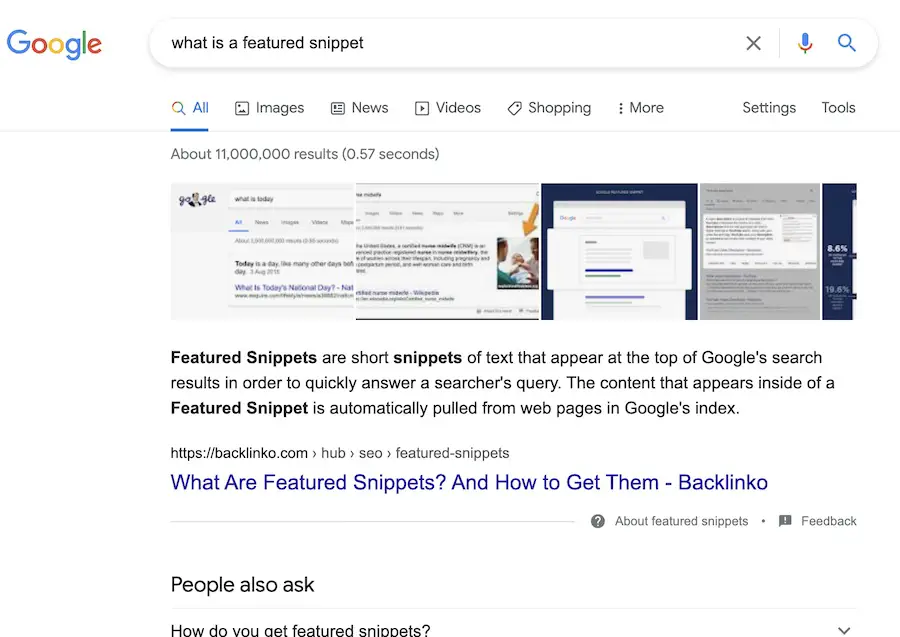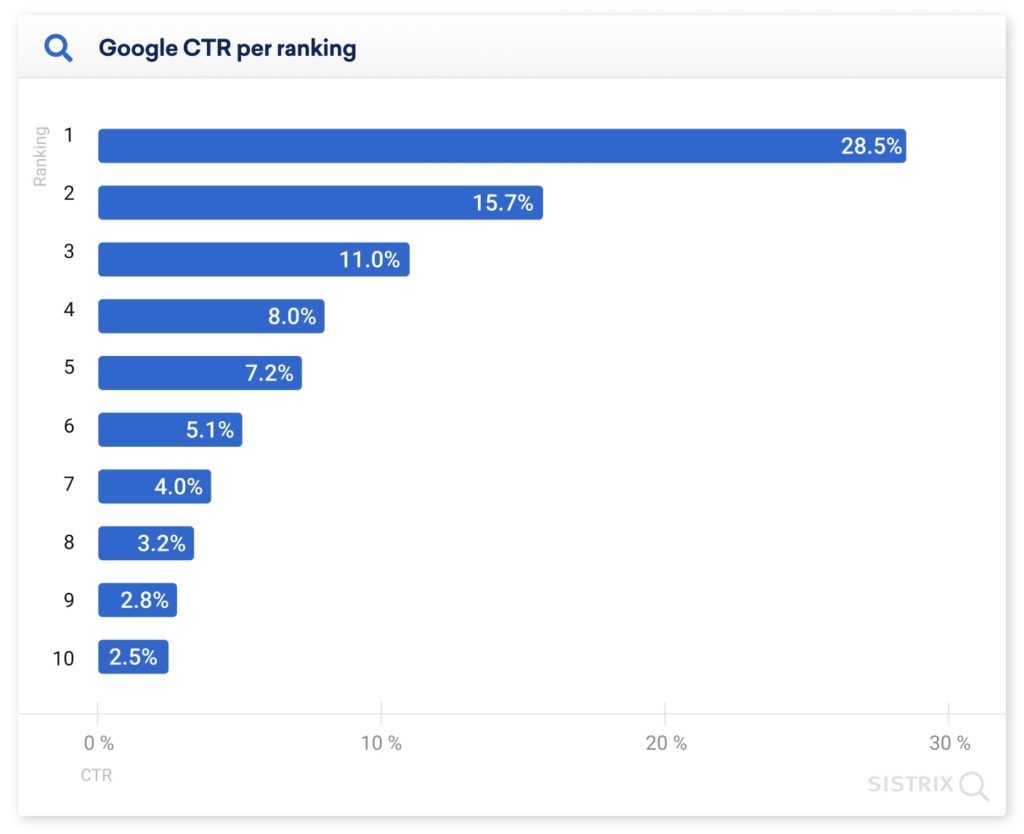Anyone who uses Google Search Console will tell you rankings can and probably will fluctuate, sitewide and per article. And there are numerous reasons why this might happen. Mostly they’re often obvious. A google core update perhaps, a batch of new content, or even world events.
But one of the combinations, that I’ve had to deal with is where an established site begins to have high Impressions but low clicks. This then impacts other areas too.
So that’s what I’m going to go through today and provide you with the reasons why this happens, and what to do about it. As well as why this happened in my most unusual encounter
Generally, high impressions and low clicks indicate that your articles are not inviting traffic. There could be increased rich results and ads above your position, or competition is just better. Or that your title is less attractive, you’re losing snippets or other factors. This will impact your CTR.
Your website is happily moving along, gaining rankings, gaining clicks. The world is a beautiful place… but then it changes and it has you scratching your head as to what you’re doing wrong.
Example of high impressions and low clicks
Here’s an example of one site I’m working with where this exact situation occurred. You can see over the course of three months, the impressions increased, but clicks decreased.
Although the trend lines follow the same path, the gap between the two has widened.
There could be several reasons for this. So let’s go over those now…
More Google content on the page
It’s no secret that Google is claiming more and more of the SERP real estate for “Google-owned” results.
There are more ads, the ads are more blended with the page, more image carousels, image result galleries, graphs, and queries such as the weather or the exchange rate are answered right there on the SERP.
It only needs a few minor adjustments at Google HQ for your content to move further down the page. You’re getting more impressions, but you’re farther down the list.
As we all know, going even slightly further down the list means just as many impressions but with fewer clicks.
Your title isn’t attractive enough
It might be that your title is not reflecting the searcher’s intent quite as accurately as you’d hoped, perhaps it’s truncated or just not click-worthy.
Google measures titles in pixels because some letters like “w” are wider than “l” for example. So titles should ideally be around 55-60 characters in length.
However, just because a title is truncated doesn’t impact it negatively in search rankings.
It just means it will be truncated. And in fact, a longer title that is truncated is still given relevance from Google’s perspective in the initial search.
You just need to ensure enough of the title is seen that it will make sense to the searcher.
If you’re using an Ad network like Ezoic, then they have a title tester facility for all their customers which enables you to experiment with your article titles without detriment to your search profile.
And if you use Ezoic only because they pay better ad revenue than Google Ads means it’s they’re well worth taking a look at.
Losing featured snippets
Losing a snippet on a major search term (or more than one) can make a difference. You’ll still get the impressions, but you will lose clicks.
Check the SERPs and see if your snippet has been beaten. Look at what you can do to regain the snippet by crafting a better stand-alone answer in your article.

Competition is better or improved (most likely reason)
At Finity Web, when we write an article, then we go back to the search results and honestly ask ourselves if our article has provided a better resource than the competition. If it hasn’t, then we need to work on it.
That you can do at any point. Just try not to change an article too much, as Google may decide it’s changed too much and needs to start the ranking process all over again. I’d recommend only a 10% change in articles to avoid major drops in rankings.
And there are some things you just cannot control…
If one or more sites you’re competing against are juggernauts, then you may well get crushed anyway, but then you might also pick up adjacent or tangential search terms.
Go back and check the SERPs, are you simply being out-performed? Check GSC for that page and see if there are any obvious signs of a traffic drop or a reduction in ranking.
You only need this to happen for a few top-performing articles and it will impact your clicks, but your impressions will still be high.
Relevance in SERPs
Perhaps you’ve had a change in the direction of your content, I’ve seen this a couple of times now.
Google tends to stick an identity on what your website is about, this is based on your chosen domain name, other content, etc. If it deviates too much from that course, then your intended audience is just less likely to click. URLs are becoming less visible in search results, but they are still there.
The audience will see your domain, your description, title, etc, and may decide that you’re not a relevant site, or an authority for their query – so they keep scrolling.
For example, if a wallpaper company begins to write about kitchen renovation, What will likely happen is that any initial keywords gained for those searches will suffer, and you will see a slide in impressions more in line with the slide in clicks.
I’m reminded of when John Mueller of Google Search indicated something along the lines that if a Business card company changed their blogs to focus on marketing strategies, then that would signal to Google that they’re not such high authority in business cards now – compared to their competition.
So what happens when we have high impressions but low clicks. Well, Click-through rate is a metric that comes into play here.
Click through rates will suffer
In brief, your impressions are when your result appears on the SERPs, above the fold, or when the searcher scrolls down. If you get 1000 impressions and 100 clicks from those impressions, that represents a 10% click-through rate.
It’s not unusual for a site to get up to 30%, 40%, 50%, or more click-through rates on some pages. Or as little as 0.8% or lower. Sitewide though, you want your CTR average to be as high as possible.
My example site has 100 articles, so a 3.4% click-through rate is still very good.
With higher impressions and lower clicks, ultimately your Click-through rate (CTR) will begin to suffer.
Looking at our real-world example, you can see the click-through rate is actually still pretty good. But it has been reduced slightly when we compare it to the three month period prior.
The click-through rate in this example is still good, considering we write articles purely to gain organic search. But for this site, we will need to focus on getting it back on track.


CTR: Preceding three months vs latter three months
You can also see during that period, that overall average rankings have also dropped from 13.9 to 13.5. This means we’re likely appearing lower in SERPs. Again, for a site with 100 articles, that’s a good overall ranking position.
What’s makes a good clickthrough rate
You will get a higher click-through rate if you’re higher in Google search. Seems obvious right?
But it’s skewed, so in fact, studies on over 80 million keywords, and billions of search results have shown that the top result gains over 28% of the clicks, and those in second and third places gain 15.7% and 11.0% respectively.

Anything beyond the top three (or maybe 5) results really begins to hit your average CTR. So how do we improve on this position? I’ve touched on some of that above, but I’ll go into some more detail next.
How to improve CTR results
By improving search rankings, you will ultimately improve your click-through rate, so your high impressions will be rewarded with high clicks.
Here’s how to improve click-through rates
Improve your title
I alluded to this earlier, but I must emphasize it again. If your title is the same as all the other results, then why should a searcher click on yours? Besides, including the search term means your result is 45% more likely to win the click.
Aside from making sure you include your intended “keywords” in the title. It’s a good idea to provide a glimpse of what the reader is going to get. So craft your title with care. Tell them what you are answering and what they’re going to get.
Improve your meta description
More often than not, Google will select – and alter your meta description based on the search results. Almost as though they are providing you with your own featured snippet below the title.
But that shouldn’t stop you from using the 160 characters you have to craft a good, engaging, and inviting meta description. One that also contains your search term, and lets the reader know (in an engaging way) what they’re going to get from reading your page.
Win more snippets
Gaining the featured snippet might seem like a bad idea, after all – that’s your answer slapped right there in the results.
But if you gain any featured snippet, and the reader likes the answer, that also means they’re likely to click on that result to find out more.
Aside from this, gaining the snippet might mean your result leaps from position 10 to position 1. It’s worth going for. So in your article, try and provide a clear and concise answer that Google might want to grab and use.
Add schema markup
Schema markup creates a more interactive result that Google can use. These include star reviews, a table of contents, and/or information on recipes, books, authors, and companies.
More ranking help…
I hope this has helped you understand why high impressions and low clicks might be affecting your site and traffic, what it means, and what you can do about it.
Having meaningful and high-quality articles is a good way to gain organic search results, and improve traffic. There are lots of writers out there, and there are lots of SEO consultants. We are unique, as we combine both. Find out more about how we write articles that rank on Google.